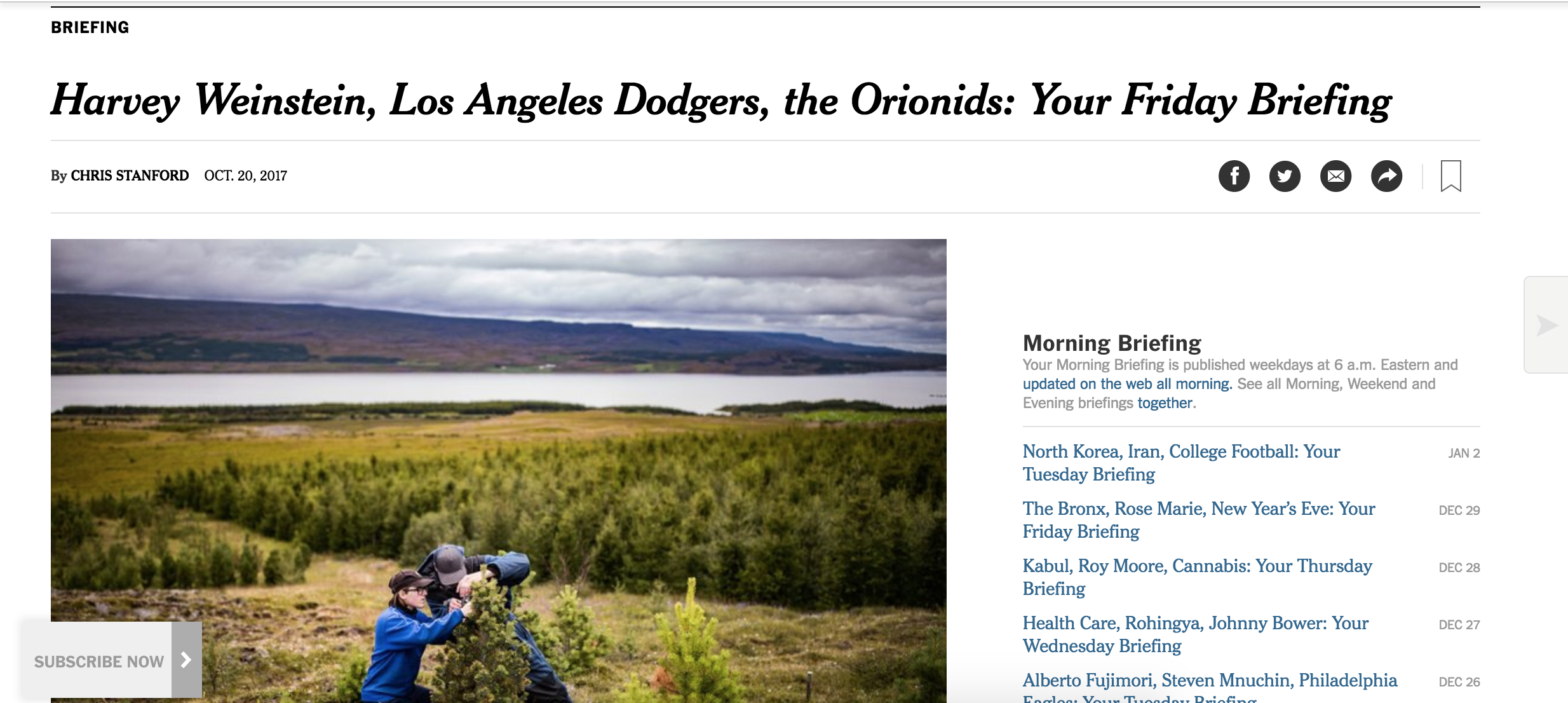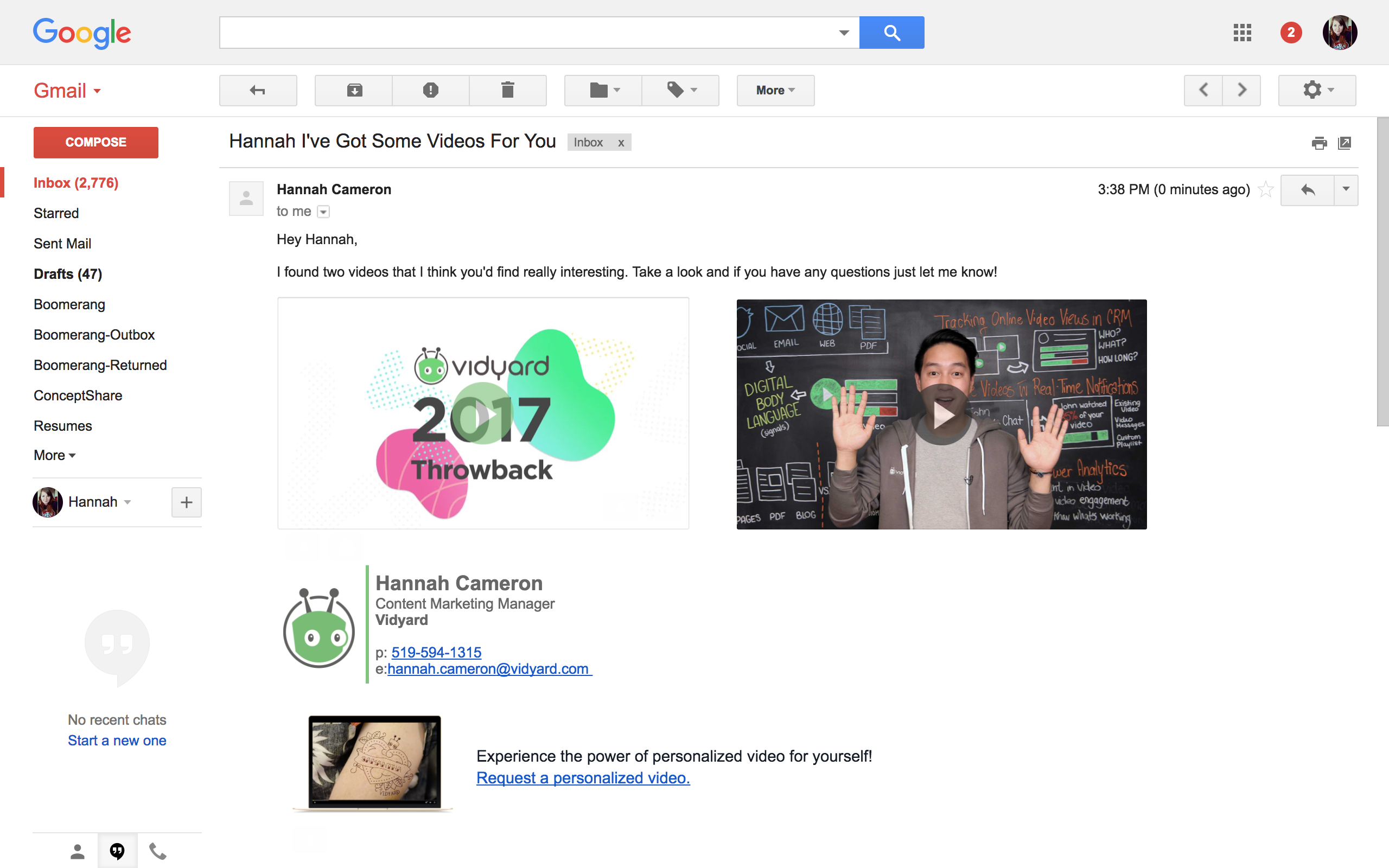“If you build it, they will come” may work in the movies, but as any team that’s launched an employee portal, an internal newsletter, or benefits workshop can attest, it’s a recipe for an empty stadium.
In reality, if you want your company’s attention, you must realize that everyone is already incredibly busy. The average person gets 121 emails, 32 texts, and who knows how many notifications every single day. To compete with all this, you have to phrase things in a way that’s interesting and drives them towards action.
Simply, you have to do some internal marketing. And here’s what a great marketer would advise:
8 things HR and internal comms teams can learn from marketers:
1. Keep it short
Tell people only what they need to know. Readers today are practically allergic to text blocks over 3-5 sentences and they expect you to curate outreach for them. Make it easy and limit most communication to just the highlights. The New York Times does a great job of this. It now offers digital readers a daily briefing, the title of which is simply three keywords and contains a series of short, bulleted facts with links to learn more:
2. Use spacing, breaks, and graphics
Readers today skim. According to research by Nielsen Norman Group, people’s eyes follow an “F” shaped pattern on web pages or emails. They read the first header, skip to the next subheader, and then they scan the left side of the page from top to bottom. What are they looking for? Keywords that snag their interest.
Source: Nielsen Norman Group
To adapt your content to readers’ habits, use large, bold headers and subheaders, ample spacing, and eye-catching visuals—either graphics that highlight your point or GIFs that make your readers chuckle and keep them coming back for more.
3. Front-load value
Another implication of the F-shaped reading pattern is that users spend the majority of their very limited time reading the top of the page and the beginning of sentences. If you want their attention, put whatever is most interesting or most valuable up front. This is known as front-loading value.
For example, write:
Save more for retirement by signing up for our 401k workshop.
And not:
Sign up for our 401k workshop if you want to save more for retirement.
4. Use video
When you email employees, you’re battling for their inboxes with the likes of BuzzFeed, and it takes fire to fight fire. You’ll notice that they and much of the world are turning to video—it will account for 82 percent of all internet traffic by 2021—and you too can harness people’s obsession with it. It’s also much easier than you think to create.
Simple video recording software takes less time than writing lengthy emails and gets you higher engagement, better retention, and conveys a tremendous amount of information in a very short span of time. Plus, if you send the video as a thumbnail within an email, you’ll get 5x higher click-through rates.
5. Use many touches
Marketers know that a message sent is rarely a message received—it takes a campaign to capture attention. According to Salesforce, it can take an average of 7-8 touches for someone to become a marketing lead. Hopefully, you’ll need fewer touches internally, but when delivering messages about new programs, upcoming system changes, and new policies, do as marketers do and create a nurture track of emails to gently remind people many times over a long period.
6. Use multiple channels
Today, people are migrating away from the email inbox and toward their “channels of choice.” This is what marketers mean by the buzzword, “omnichannel”: customers expect you to communicate with them on their favorite channel on their terms. It’s a huge ask because you must use multiple channels, but if you want to reach everyone with your message internally, you’ll have to reach them where they want to be reached. And speaking of alternative channels …
7. Turn employees into advocates
Great marketers know that word of mouth is the most persuasive channel there is. Recommendations carry tremendous weight—92 percent of people seek them out—and they’re always perfectly targeted because they get passed from interested person to interested person like homing missiles. Encourage sharing within your internal communications campaigns by explicitly telling (and perhaps even rewarding) employees for spreading the word.
8. Use the empty-suitcase method for headlines
This is our final marketing trick, and it’s a good one: leave a key fact out of your email subject lines and article headlines. Litmus, an email analytics firm, calls this the “empty suitcase method,” whereby you sell a suitcase, but neglect to mention what’s in it. For example:
- This will make you jump for benefits joy
- Can you guess what benefit 70% of employees forget to use?
- Did you know you could buy a new car with this % increase in your retirement savings?
This approach creates curiosity and inspires them to click, read, and learn more.
And there you have it! If you’ve made it to the end of this article, you’re a real champ—20 percent of readers across most websites don’t, and those are the busy, attention-starved readers that you must tailor your HR and internal communications to.
If you build it, they will come, but only with the right degree of brevity, formatting, video, many touches across the right channels, advocacy, and the empty suitcase method.
Want to boost internal employee response rates? Read 11 Simple Ways to Improve Your Internal Communication With Video.
The post 8 things HR and internal comms teams can learn from marketers appeared first on Vidyard.
source http://www.vidyard.com/blog/8-things-internal-comms-teams-can-learn-marketers/



No comments:
Post a Comment